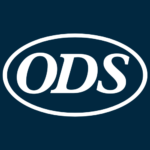🚀 How ODS Uses Source-to-Pay to Optimize Spend
Leveraging over 25 Years of first-hand Procurement wisdom, ODS uses ServiceNow Source-to-Pay to provide real-time, consolidated visibility to provide new insights. By enhancing spend optimization and enabling organizations to identify cost-saving opportunities they eliminate inefficiencies. With enhanced data accuracy and consistency, customers can make better strategic sourcing decisions, ultimately lowering spend and improving financial performance.
Many organizations struggle with fragmented procurement processes and limited supplier visibility, resulting in missed savings opportunities and inefficiencies. Outcome Driven Solutions (ODS) leverages ServiceNow Source-to-Pay with AI-driven analytics and automated workflows to streamline sourcing, enhance supplier collaboration, and drive measurable cost reductions.
📊 Key Performance Indicators (KPIs)
Sourcing Cost Savings
This is the headline metric for any procurement team. It shows the tangible impact of sourcing strategies on the bottom line. Demonstrating consistent cost reductions (especially 6–12% on newly managed categories) builds credibility with Finance and proves procurement’s strategic value.
Spend Under Management (SUM)
The more spend that flows through formal procurement processes, the more opportunities you have to negotiate savings, manage supplier risk, and enforce policy. High SUM (typically 80% or more) reflects procurement maturity and is foundational to everything else you measure.
Maverick Spend Index
Uncontrolled spend is expensive and risky. Tracking and reducing maverick spend improves pricing consistency, reduces compliance violations, and strengthens supplier relationships. Best-in-class organizations keep it under 3% of addressable spend.
Purchase Price Variance (PPV)
PPV uncovers whether you’re actually paying what you should be — or getting squeezed by suppliers. Monitoring PPV across key categories ensures you’re capturing negotiated savings and not losing value to hidden pricing fluctuations.
Total Cost of Ownership (TCO)
Unit price is only part of the story. TCO helps procurement influence smarter, long-term buying decisions by factoring in maintenance, service, risk, and end-of-life costs. It shifts focus from cheapest to most valuable.
Our clients typically achieve break-even within the first quarter of go-live.
📘 Case Study: Unlocking Strategic Spend Optimization with ServiceNow + ODS
Background
A Fortune 500 technology services company had grown rapidly through acquisitions, inheriting a patchwork of procurement tools, supplier contracts, and disconnected processes across business units. While procurement had good intentions, Finance saw them as a tactical function — slow to act, inconsistent in execution, and unable to prove savings beyond anecdotal wins.
Leadership knew they were leaving money on the table. What they didn’t know was how much, where, or how to fix it.
That’s when they brought in Outcome Driven Solutions (ODS) to implement a unified, analytics-driven Spend Optimization framework on ServiceNow Source-to-Pay.
The Challenge
Procurement struggled with:
Low Spend Under Management — less than 45% of enterprise spend was formally sourced or governed.
Rampant Maverick Spend — more than 12% of purchases bypassed preferred suppliers.
Siloed Contracts — leading to missed rebates, inconsistent pricing, and redundant suppliers.
No Standard Cost-Savings Tracking — making it impossible to credit Procurement with financial impact.
Solution: A Structured Approach with Measurable KPIs
ODS worked with Procurement, Finance, and IT to deploy ServiceNow Source-to-Pay, enhanced by ODS-built dashboards and workflows that targeted five specific KPIs:
ODS created guided buying paths, automated intake, and spend visibility dashboards that routed all sourcing above threshold through procurement. Within 6 months, SUM jumped from 45% to 78%, putting hundreds of millions in spend under active control.
ODS enforced policy controls and introduced AI-based suggestions for preferred suppliers during the request process. Maverick spend dropped to under 4%, delivering consistent pricing and eliminating rogue purchases.
A structured sourcing pipeline, with ODS’s configurable RFx templates and award logic, enabled category managers to capture and report 8–11% savings on newly managed spend — all tracked and auditable via built-in dashboards tied to sourcing events.
ODS enabled catalog price validation and should-cost modeling within the ServiceNow procurement workspace. This allowed sourcing teams to flag price creep and benchmark against historical averages. PPV improved across key categories, with consistent cost reductions of 3–7% compared to legacy rates.
Procurement shifted away from just quoting lowest unit price. Using ServiceNow workflow extensions built by ODS, they included warranty, SLA, and lifecycle cost factors into sourcing decisions. This helped the organization save 15% on IT hardware by selecting slightly higher-cost models with longer support coverage — reducing replacement frequency and service costs.
The Results
Within 12 months, the company had transformed from a fragmented procurement function into a trusted strategic partner to Finance. Key outcomes included:
$26M in documented savings from strategic sourcing events
78% Spend Under Management, with executive visibility by business unit
Rebates and incentives worth over $4M reclaimed from previously unmanaged contracts
Standard dashboards that connected every savings initiative to Finance-approved categories and GL accounts
Why It Worked
The success wasn’t just in deploying a new ServiceNow module — it was in applying ODS strategic guidance and measurable KPIs to align Procurement efforts to Finance expectations.
As a result, the company turned data into decisions, decisions into savings, and savings into credibility.
